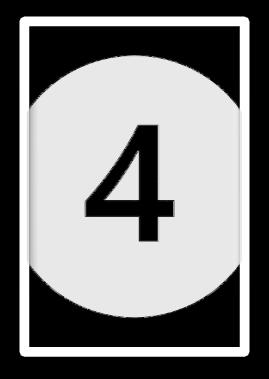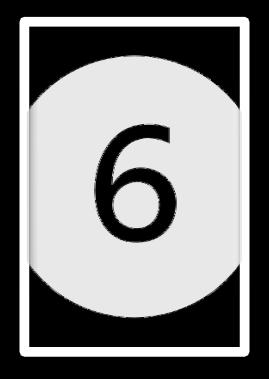OVERVIEW OF CUSTOMS AUDITS & KEY ASPECTS





















































Checks conducted at the point of clearance causes delays in clearance process resulting in an economic cost to the traders and the economy as a whole
It is an effective tool to measure and improve compliance through a structured examination of the business environment

Customs Post Clearance Audit (PCA)

is an initiative based on global best practices
PCA allows the Department to apply a risk-based selection of the Auditees and allow the Department to channel its efforts towards high risk areas
PCA promotes a culture of voluntary compliance
Section 99A of the Customs Act 1962
provides statutory framework for the procedure for conducting PCA


India is a signatory/ party to the International Conventions which have laid down the need for controlbased audit and has thus, systematically implemented PCA with the proper authority of the law
World Trade Organisation
• Post-clearance Audit: Article 7 of the WTO Trade Facilitation Agreement
• Member states under obligation to adopt post clearance audit to ensure seamless and expedite release of goods
• Selection of auditee or consignment in a risk-based manner following appropriate selectivity criteria


World Customs Organization
In the parallel, representation needs to be drawn and filed for fixation of lucrative RoDTEP rates qua goods classifiable under said Chapters
• WCO has issued further guidelines for PCA by the name “Guidelines for Post Clearance Audit Volume-I” and “Guidelines for Post Clearance Audit Volume-II”
• The Guidelines prescribes for Theme based, Premise based and Transaction based Audit


• Post clearance audit was first introduced in 2005 and has replaced the conventional system of concurrent audit, which formed a part of the assessment process
• It separates audit function from assessment function, thereby facilitating expeditious clearance of goods

• The scope and coverage of audit under the PCA regime is not restricted to transaction level but more importantly evaluates the trader’s commercial systems

• The entire gamut of persons/companies directly or indirectly involved in the transactions of export and/or import of goods can be audited and Explanation to this effect has been added in Section 99A
• Presently, Customs Audit Regulations, 2018 govern rights and obligations of the auditees and manner of conducting audit


99A. The proper officer may carry out the audit of assessment of imported goods or export goods or of an auditee under this Act either in his office or in the premises of the auditee in such manner as may be prescribed.
Explanation. For the purposes of this section, “auditee” means a person who is subject to an audit under this section and includes an importer or exporter or custodian approved under section 45 or licensee of a warehouse and any other person concerned directly or indirectly in clearing, forwarding, stocking, carrying, selling or purchasing of imported goods or export goods or dutiable goods.


Scope of Term ‘Audit’ includes examination or verification of declaration, record, entry, document, import or export licence, authorisation, scrip, certificate, permission etc., books of account, test or analysis reports, and any other document relating to imported goods or export goods or dutiable goods, and may include inspection of sample and goods






Scope of Term ‘Auditee’ includes an importer or exporter or custodian under section 45 or licensee of a warehouse and any other person concerned directly or indirectly in clearing, forwarding, stocking, carrying, selling or purchasing of imported goods or export goods or dutiable goods
Scope of Term ‘Premises’ includes the registered office, branch office, warehouse, factory, or any other premises at which, imported goods or export goods or dutiable goods or books of account or records of transaction or other related documents, in relation to the said goods are ordinarily kept
Duration for maintenance of records: Records in relation to imported goods or export goods or dutiable goods to be maintained for a minimum period of five years
Selection of auditee or import declarations or export declarations shall primarily be based on risk evaluation through appropriate selectivity criteria
Penalty of INR 50,000 to be applied on who contravenes any provision under Audit Regulations



Linked with particular transaction Audit is conducted even after goods are released from Customs Control Non-levied, short-levied duty burden or even compliance under any other law can be scrutinised

Comprehensive checks on Auditee’s internal control system and procedures followed This Audit allows inspection of goods, verification of all transactions and documents that are deemed necessary to give holistic picture of Auditee’s business
“Theme focused audit” instead of a “comprehensive audit”
The results obtained are meant for the policy makers to keep compliance levels of a particular industry/trade under check
Does not normally require the auditor to visit the premises of the exporter/importer and the audit can be conducted at the Customs office

Transaction Based Audit (TBA) is different from Onsite Post Clearance Audit (OSPCA) and is conducted on the basis of the transactions identified by Risk Management System (RMS)
TBA, which is done in the Customs Houses, continued side by side with OSPCA, the latter being done at the premises of the importers / exporters
TBA is not as thorough as a field audit on site, it uses fewer resources and acts as a reminder to business/trade that Customs are monitoring their activities



1The proper officer may require the auditee to furnish documents, information or record including electronic record

An opportunity to offer clarifications with supporting documents against the objections shall be granted before preparing the audit report
The proper officer may inspect the imported goods or export goods or dutiable goods at the premises of the auditee or ask auditee to produce samples
The Auditee may make voluntary payments of duty, interest or other sums in part or in full and the proper officer shall record the same in the audit report
At least fifteen days advance notice to be served to the auditee to conduct audit at the premises
It shall be mandatory for the proper officer to inform outcome of the audit to the auditee. Audit conducted at the premises of the auditee to be completed within thirty days from the date of starting of the audit

Theme Based Audit (ThBA) involves review of data relating to the entire business activity for a particular commodity, industry or issue. It provides a systematic approach to data collection and an analysis of data to determine the likelihood of non-compliance
Themes for conducting ThBA in past:
• Duty Drawback Scheme during the period of transition to GST regime w.e.f. July 1, 2017, to September 30, 2017
• Duty Drawback Scheme during the period of transition to GST regime w.e.f. July 1, 2017 to September 30, 2017
• Import of Telecom Equipment, Mobile/Cellular Phone Parts and Aircraft Parts
• Import of Telecom Equipment, Mobile/Cellular Phone Parts and Aircraft Parts

• Anti-Dumping Duty on Auto/Vehicle Parts-Radiators, Axle for trailers, Alloy Wheel etc. (Notification No. 20/2017-Cus. dated May 12, 2017)
• Anti Dumping Duty on Auto/Vehicle Parts Radiators, Axle for trailers, Alloy Wheel etc. (Notification No. 20/2017-Cus. dated May 12, 2017)
• Misclassification of Radiators & parts of automobiles with a view to avoiding Anti-Dumping Duty:
• Misclassification of Radiators & parts of automobiles with a view to avoiding Anti-Dumping Duty
• Undue benefit of BCD under Sr. No. 530A of the Notification No. 50/2017-Cus dated June 30,
• Undue benefit of BCD under Sr. No. 530A of the Notification No. 50/2017-Cus dated June 30, 2017
2017:
• Related party transaction value cases handled by SVB Cells at major Customs Houses
• Related party transaction value cases handled by SVB Cells at major Customs Houses



Onsite PCA will be conducted once in two years / three years / five years for AEOs T-1, T-2 & T3 respectively
• No specified frequency for other than AEO

• PCA will be conducted under mainly ThBA and PBA as may be necessary

• Onsite audit is typically conducted basis observations of TBA, ThBA











Description













While formulating Customs Checklist following Aspects to be considered:

Rate of duty/ Cess Valuation (also, approach under Customs vs. Transfer Pricing)
Whether antidumping duty or safeguard duty is applicable?
Whether Exemption notification benefit availed or not?
Is Exemption notification conditional or otherwise?
Whether duty benefit is available under a Free Trade Agreement?
Whether duty benefit is available under Export Promotion schemes?
Documentation




Information Uniformity: Following information as recorded in system (ERP, accounting software, etc), Invoice and BoE must be uniformly mentioned
• Description of product
• Quantity
• Unit of measurement
Docketing in support of classification
• Scientific/Technical literature
• Expert opinion
Importance
Reconciliation: of data recorded on ICEGATE vis-à-vis system, specially ITC related data.
Docketing in support of tax rate: Brief note justifying
• Availability of exemption notification, FTA/PTA,
• Expert opinion – Technical/Legal


• Fulfilment of condition for concessional rate/exemption
• Re-affirmation of tariff rate
FTP Compliance:
• AA: Comprehensive documentation
• AA: Identification of stock
• EPCG: Tracking: EODC
• EPCG: seeking extension if necessary
• Release of Bond
Allied Laws: Verification of applicable allied laws and due compliance with these
NCR Tower B-1, 1060, Spaze Itech Park, Sector 49, Sohna Road, Gurugram, Haryana 122018

PUNE
MUMBAI
3rd Floor, Spacierge, Sai Heritage, Baner, Pune Maharashtra 411045


M: +91 98185 06469
M: +91 97647 04000
204, Antariksh Building, Marol Makwana Road, Andheri East, Mumbai Maharashtra 400079
M: +91 90119 03015
DUBAI 36th Floor, Aspin Commercial Towers, Sheikh Zayed Road, Dubai M: +971 58586 3015